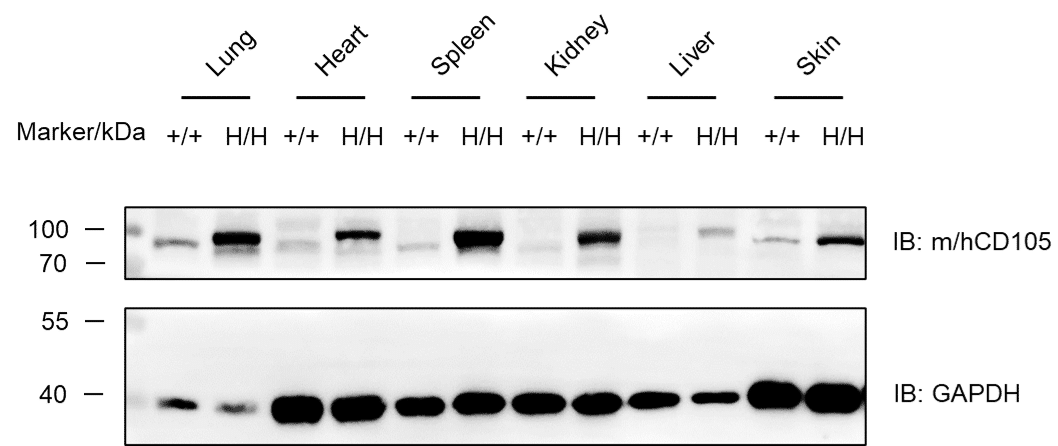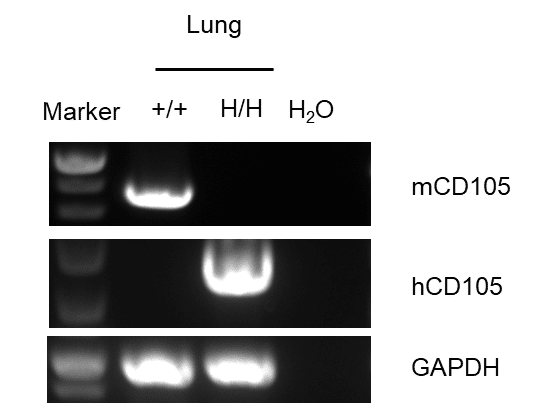Basic Information
-
Targeting strategy

-
Gene targeting strategy for B-hCD105 mice.
The exons 2~14 of mouse Eng gene that encode the extracellular domain were replaced by human ENG exons 2~14 in B-hCD105 mice.
-
Protein expression analysis

-

Western blot analysis of CD105 protein expression in homozygous B-hCD105 mice. Various tissue lysates were collected from wild-type C57BL/6 mice (+/+) and homozygous B-hCD105 mice (H/H), and then analyzed by western blot with species-specific anti-CD105 antibody. 20 μg total proteins were loaded for western blotting analysis. hCD105 was detected in lung,heart,spleen,kidney,liver and skin from homozygous mice.
-
mRNA expression analysis

-

Strain specific analysis of CD105 mRNA expression in wild-type C57BL/6 mice and B-hCD105 mice by RT-PCR. Lung RNA was isolated from wild-type C57BL/6 mice (+/+) and homozygous B-hCD105 mice (H/H), then cDNA libraries were synthesized by reverse transcription, followed by PCR with mouse or human CD105 primers. Mouse CD105 mRNA was detectable only in wild-type C57BL/6 mice. Human CD105 mRNA was detectable only in homozygous B-hCD105 mice but not in wild-type mice.
-
Summary

-
mRNA expression analysis:
Mouse CD105 mRNA was detectable in lung of wild-type C57BL/6 mice. Human CD105 mRNA was detectable in B-hCD105 mice.
Protein expression analysis:
Human CD105 was detectable in lung, heart, spleen, kidney, liver and skin from homozygous mice.


